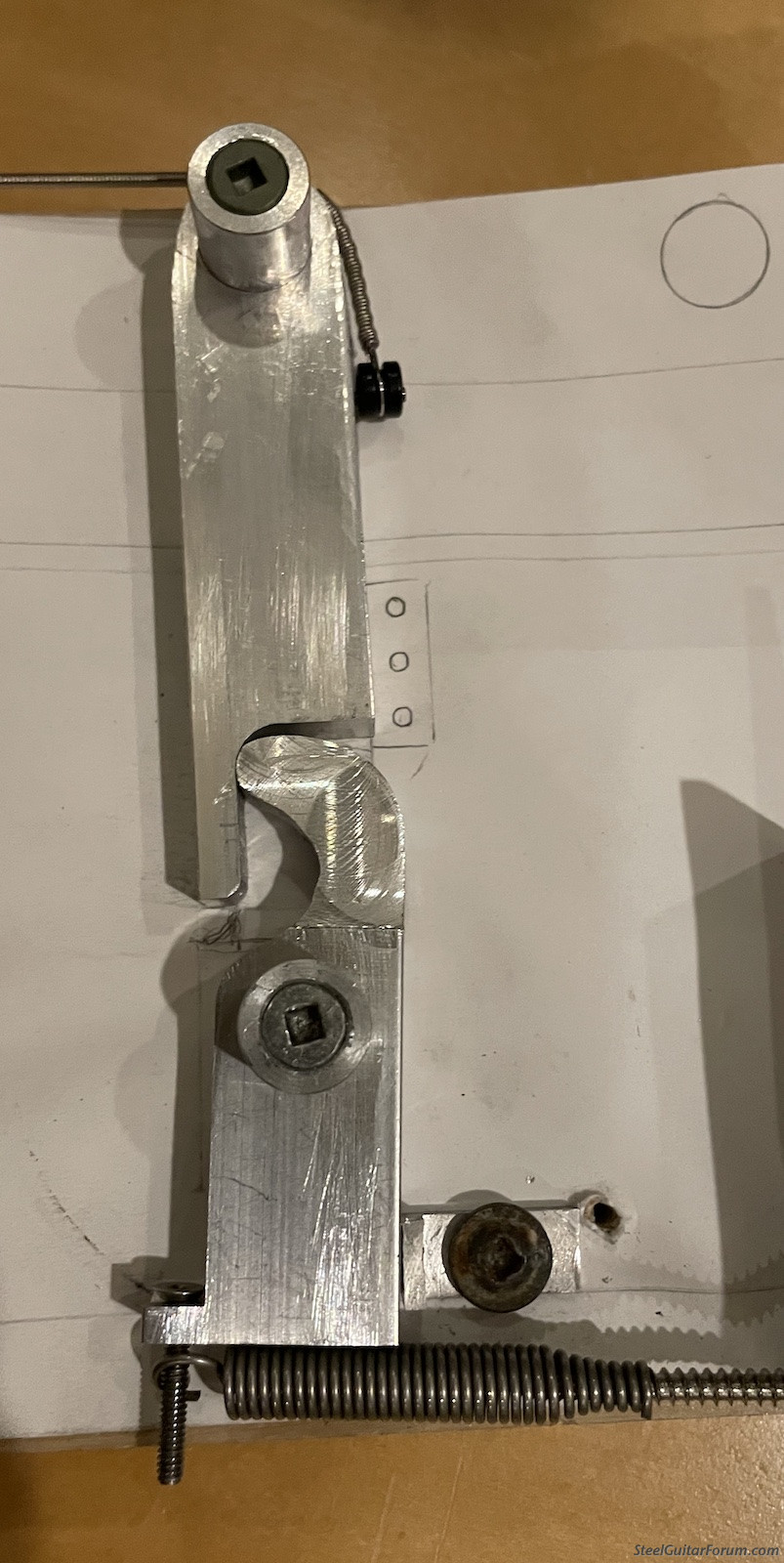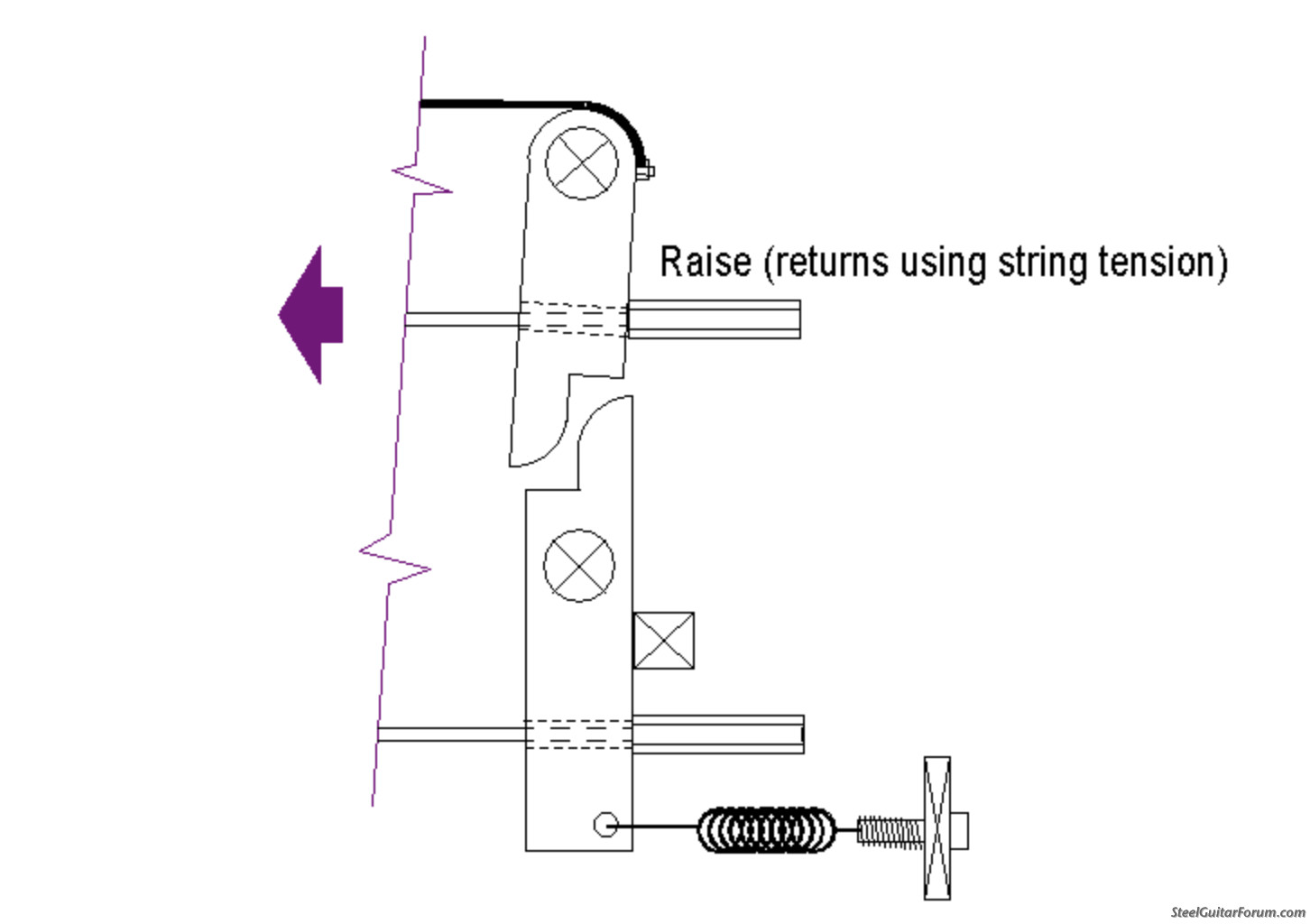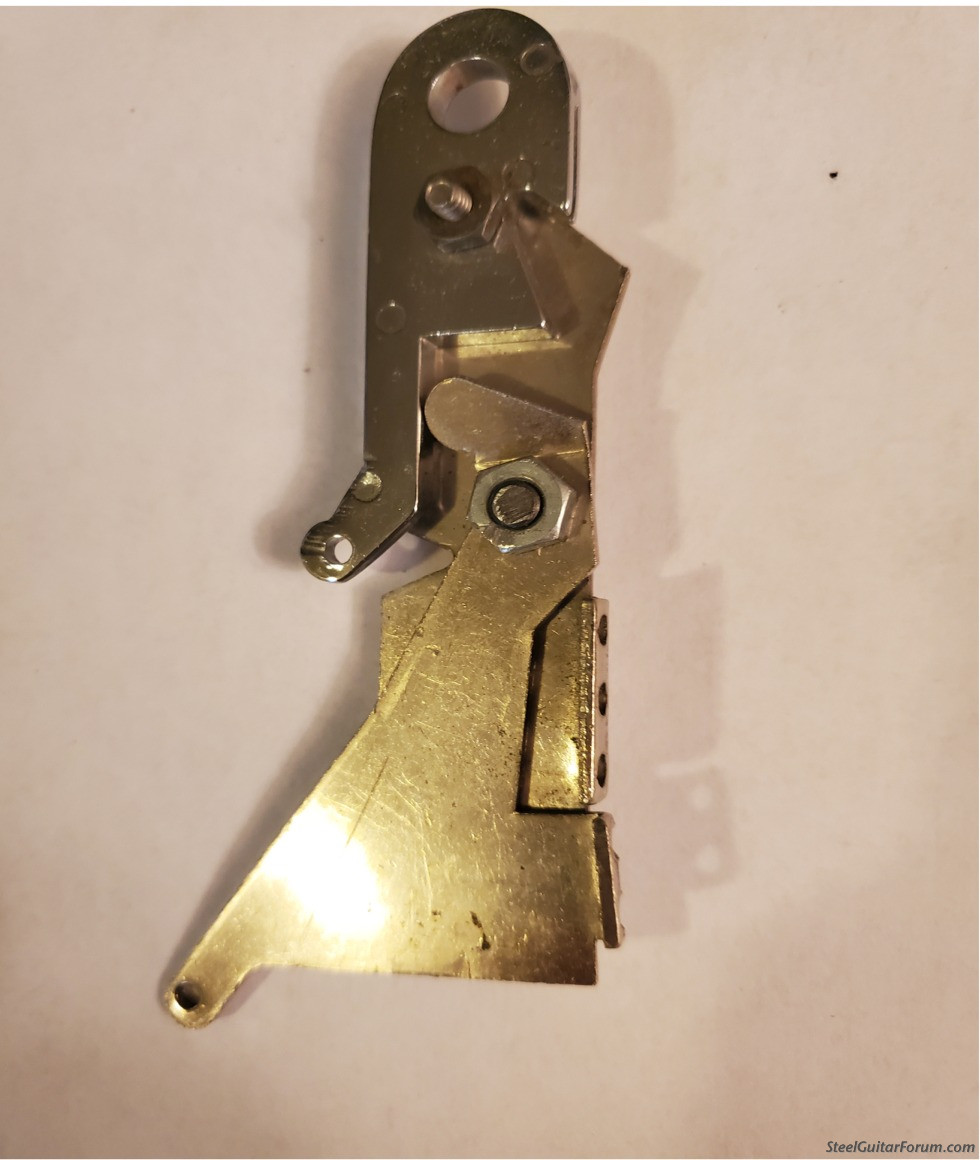

Has anybody here tried this approach that could offer me advice or words of warning?
I don't like scissor fingers because they bind up without correct adjustment so I have
been trying to come up with a way to separate out the stresses so that the raises and
lowers don't impinge or affect each other in any way.
The idea is to add an axle shaft for a set of pivots lower in the endplate. This way
The springs have no effect on the raise mechanism other than to hold the lowering stop pivots. It would function like an all raise guitar unless you pull on the lowers.
It would eliminate all of the rivets and replace them with a single axle. There is a single
full width bearing surface for each string.
I can see that it might make the raises a bit harder but I'm wondering if there are any other gotchas that I have to look out for before I get stuck in on cutting the new endplate and pillow blocks.
Any ideas?




